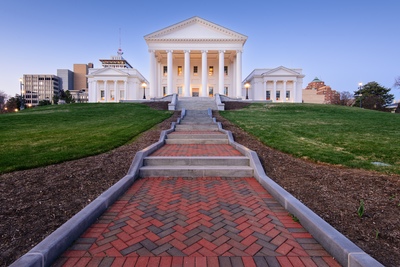
State Government Affairs, Elections & Campaigns
How Lieutenant Governors Are Selected (And Why It Matters)
December 10, 2025 | Bill Kramer
November 1, 2021 | Max Rieper
-3fb53e-1200px.jpeg)
Key Takeaways:
Update: all of the New York measurers failed.
On Tuesday, New York voters will consider ballot measures that could have a major impact on future elections in the state. In general, the election process has drawn a lot of attention in politics recently after many states modified their election rules to accommodate safety during the pandemic. A handful of states have tightened restrictions while other states have expanded efforts to make it easier for eligible voters to cast a ballot.
The first ballot measure relates to the contentious issue of redistricting by making a number of changes to the state constitution. The proposal would:
Cap the number of state senators at 63. The state constitution originally set the number of senators at 50, but the legislature continued to pass reapportionment legislation to increase the number of districts over the years. This proposal would freeze the current number of senators, and bring the state constitution in conformity with the U.S. Constitution, which requires state legislative districts to have roughly equal populations.
Require incarcerated voters to be counted at the place of their last residence, rather than where they are incarcerated, for the purpose of congressional redistricting. This is already the practice for state legislative districts, and would likely reduce the official population numbers of upstate districts, where many state prisons are located, in favor of districts closer to New York City.
Require state legislative districts to be based on the total population of the state, and require the state to count all residents, including non-citizens, even if the federal census fails to include them. This is a response to the Trump Administration’s thwarted plans to exclude non-citizens from census figures.
Amend partisanship requirements for the redistricting commission. The commission was created in 2014 and requires bipartisan co-executive directors. This proposal removes the bipartisan requirement, allowing appointment of directors by a simple majority of the commission, regardless of party affiliation. The proposal also amends the alternative process if co-executive directors fail to be appointed.
Amend the redistricting process. Under the proposal, the redistricting commission could approve a plan with seven out of ten votes, with no requirement that the plan be approved by at least one commissioner appointed by each of the legislative leaders. A plan approved by the commission could be approved by a majority of each house of the legislature. If the commission fails to approve a plan, the plan with the most votes would be submitted to the legislature and could be approved with a 60 percent majority. The proposal would also repeal a current requirement that if the leaders of both chambers are of the same political party, an approval must be by two-thirds of the members in each house. The commission would also have to submit its redistricting plan two months earlier than the current timeline, although for 2022, the deadline would be January 1, with a second deadline on January 15 if the first map is rejected by the legislature. With Democrats controlling a supermajority in both chambers, this would make it easier for them to get their maps approved.
Republicans have criticized the proposal, particularly the changes to the redistricting commission.
“It is absurd that the Dem party wants to co-op and strip independence and strip authority away from an independent redistricting process that has never been used yet,” argued New York Republican Party Chairman Nick Langworthy.
The League of Women Voters of New York State has also called for the proposal to be rejected, due to concerns it would weaken the minority party and reduce the role of the redistricting commission. But good government groups such as New York Public Interest Research Group (NYPIRG) and New York Common Cause support the proposal for ending “prison-based gerrymandering”
Same-day voter registration has become a popular way to expand access to the ballot box with 24 states currently allowing voters to register the day of an election. The New York state constitution requires voters be registered at least ten days before an election. Ballot Proposal 3 would remove that constitutional limitation. If approved, the legislature would be able to pass a law to allow people to register and vote the day of an election.
Another popular way to expand ballot access has been to allow “no-excuse” absentee ballots. Currently, 34 states allow voters to submit an absentee ballot without providing a reason for doing so. At this time, New York voters can only submit an absentee ballot if they expect to be absent from the county of their residence on election day or are unable to appear at the polling place due to illness or physical disability. Ballot Proposal 4 would amend the state constitution to provide that anyone can submit an absentee ballot without providing a reason.
In addition to the three election-related ballot measures, voters will decide on Ballot Proposal 2, which would establish a right of each person to clean air and water and a healthful environment, and Ballot Proposal 5, which would increase the maximum threshold of a claim that can be decided in New York City Civil Court from $25,000 to $50,000.
New York voters have historically approved ballot measures an overwhelming majority of the time. We’ll find out later this week if that trend continues in 2021. Visit our 2021 State Elections landing page for election results and analysis from New Jersey, Virginia, and 24 statewide ballot measures.

December 10, 2025 | Bill Kramer
-238a17-400px.jpg)
December 10, 2025 | Bill Kramer

November 5, 2025 | Bill Kramer